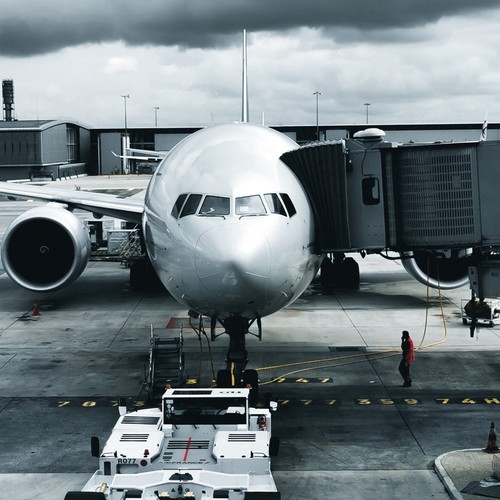
America, it turns out, is just a bit unique.
In Washington, Boeing and Airbus are asking the US transport secretary to delay mobile operators' 5G deployments, citing possible negative 5G effects on aircraft safety systems.
Verizon and AT&T agreed to delay the launch of their upgraded 5G networks using the 3.7GHz to 3.8GHz frequency bands, after initially telling the Federation Aviation Administration (FAA) they would both ignore the request for a delay.
Doing so would probably have led to courtroom drama. (And US courts generally defer to regulators in areas involving technical questions.)
But in other jurisdictions, and especially in Europe, regulators and the aviation industry have all been perfectly happy for the 5G rollout to jet on ahead.
So what's different? Partly, it's the nature of bureaucracy, and partly it's that 5G uses slightly different bands in Europe than it does in the US.
Beltway bureaucratic politics
Boeing, Airbus and a US airline industry body, Airlines for America, argue that a widespread rollout of 5G technology in the US, in the first instance by AT&T and Verizon, could interfere with sensitive airplane equipment like radio altimeters, important devices that measure how far above the ground an airplane is travelling at any given time.
Airlines for America represents American Airlines, Delta, FedEx and UPS.
"We agree that 5G interference could adversely affect the ability of aircraft to safely operate," Boeing CEO Dave Calhoun and Airbus Americas CEO Jeffrey Knittel wrote to Pete Buttigieg, the US Transportation Secretary.
Altimeters and flight systems operate in the 4200MHz to 4400MHz band, and the C-band in which 5G services operate in the US lies between 3400MHz and 3800MHz.
Part of what's going on in the US is old-fashioned, Beltway-style bureaucratic politics. There are two agencies at work, each keen to champion the industry it regulates – and to foist expenses, if possible, elsewhere.
The FAA issued a bulletin in November asking the aviation industry to take careful note of any erroneous instrument behavior. The idea was to ensure the mobile industry (and not the aviation sector) could pay for any equipment upgrades that turned out to be needed.
The Federal Communications Commission (FCC) has in turn said there should be a 200MHz guard band of spectrum between the C-band that 5G uses and the flight systems' band, which the FAA accepted at the time.
According to this line of thought, if this isn't sufficient, then aviators can pay for extra radio frequency filters that are capable of isolating signals from the right band, while blocking unwanted noise from other parts of the radio spectrum.
We're with the band
While this degree of bureaucratic capture by industries of the regulators is as age-old an American custom as baseball and apple pie, another difference between the US and Europe is the band in which 5G operates.
In the US, this is 3.7GHz to 3.98GHz, which sits just a little higher than the 3.4GHz to 3.8GHz 5G band in Europe, and thus bumps up slightly closer to the 4.2GHz to 4.4GHz altimeter band (which is the same in both places).
Also, Europe's bigger gap between altimeter and 5G bands means altimeter filters would work better at blocking errant protruding 5G signals.
Possibly as a result, the EU regulator has taken a much more relaxed view of any negative effect of 5G. In December, the European Union Aviation Safety Agency said: "At this stage, no risk of unsafe interference has been identified in Europe."
Meanwhile, other regulators, like the Australian Communications and Media Authority, have said they believe 200MHz is a sufficient "guard band" to keep the 5G and aircraft safety bands separate.
Want to know more about 5G? Check out our dedicated 5G content channel here on Light Reading.
And the Canadian spectrum regulator – Innovation, Science and Economic Development Canada – has called for two extra protection measures: exclusion and protection zones around certain airport runways that perform automated landings (altimeters are especially important in these), and a national requirement for antenna down-tilting.
The second of these, which is done electrically rather than physically, has the effect of making 5G beams point down.
You've got to keep them separated
Some other countries that were faster off the mark in 5G rollout say they have not experienced interference with aircrafts' radio waves. South Korea, which commercialized 5G in April 2019, is one such country.
"The laws of physics are no different in the United States than in Europe or Asia," quips CTIA, a US wireless trade body (originally the Cellular Telephone Industries Association).
The CTIA also points out that Ireland, Denmark and Finland all have stronger 5G signals than authorized in the US, using higher power levels, without any experience of impact on radio altimeters.
A final vexing point in the whole matter: There actually isn't a common technical standard for altimeters to measure against.
The FCC has found there can be "large variation in radio altimeter receiver performance between different manufacturers," depending on factors like whether they are equipped with good filters.
Finally, one rare cautious note from outside the US has come from France: Its civil aviation authority in February recommended all passengers switch off mobile phones with 5G when flying.
Related posts:
— Padraig Belton, contributing editor, special to Light Reading
About the Author(s)
You May Also Like











